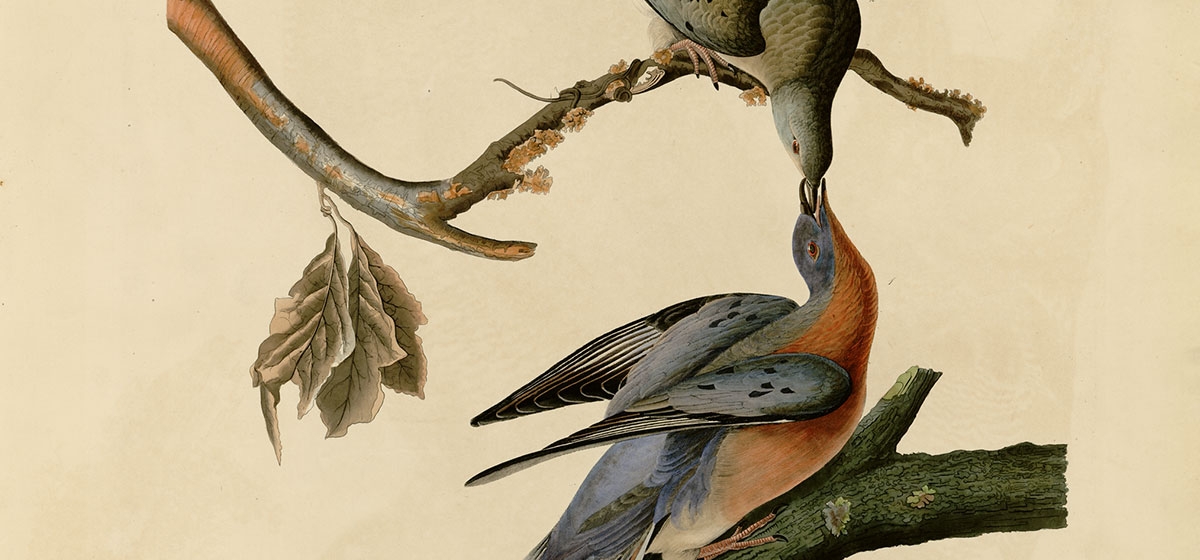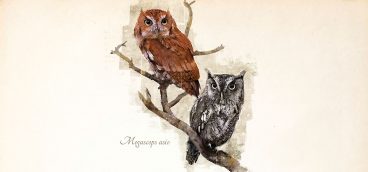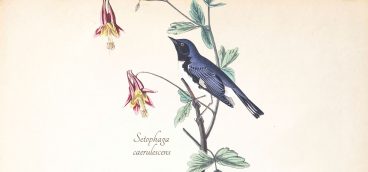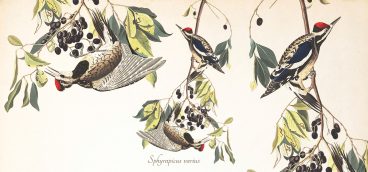
During our colonial period, America’s forests were felled slowly. Beginning in New England, subsistence farming and the promise of better lands to the west meant regions were settled and cleared for agriculture, then abandoned, only to regenerate. This pattern cycle of destruction and reforestation created a patchwork of fields that gave way to second growth woodlands, a rolling wave of ecological change.
The rate of deforestation peaked east of the Mississippi in the early 1870s. In the 20th century, the demise of family farms and the advent of agribusiness consolidated and industrialized farming. Wooded areas have regrown, and today there is as much forested land in the eastern U.S. as there was at the beginning of the Civil War. Yet for every new strip mall or development that is built, the size and quality of those regenerated woodlands is compromised. And today’s woodlands are different than the forests that preceded them, dissimilar in species and age composition.
Even in western Pennsylvania, sprawl gobbles up suburban fields, marshes and forests, destroying habitat in ways that are permanent compared with 19th century changes. So the lessons of that era must resonate for us.
The biggest ornithological lesson involves the passenger pigeon. To picture the bird, think of an extra large mourning dove or visit the painting by John James Audubon in the University of Pittsburgh’s wonderful online collection of his “Birds of America.” Audubon came through Pittsburgh several times, making his passage up and down the Ohio River and into the Mississippi. In the fall of 1824, he stopped in Pittsburgh to paint the pigeon.
Once the most numerous avian species in North America and perhaps the world, passenger pigeons numbered in the billions in the 19th century. Huge flocks took hours and hours to fly past, with the flock itself more than a mile across and so dense “that the sky and the sun were obscured by them, the daylight becoming sensibly diminished by their shadow,” according to one report. Those pigeons nested in vast arboreal colonies, each encompassing 40 to 100 square miles or more. What happened to them?
Market pigeon hunters took their toll, especially once telegraphs and railroads allowed them to track and pursue roosting and nesting flocks. In the late 1870s, there were perhaps 5,000 professional pigeoners who used guns and large clap nets to catch hundreds of birds at once, a thousand per net a day, on average. In some cases, that number was multiplied fivefold. Some 1.5 million birds were packed in barrels and shipped to market in the summer of 1878 from one of the remaining great roosts in Michigan. A girl sent to fetch a dozen passenger pigeons for supper paid 50 to 60 cents for the lot. More troubling were the numbers of live birds sent to cities for trap shooting: 1,316 by one man, 80,352 from one nesting site, and 175,000 a year for 20 years from one provisions dealer. By 1914, there remained but one living passenger pigeon, called Martha by her keepers at the Cincinnati Zoo. It died at 1 p.m., Sept. 1—the first precise record of a species’ extinction.
For many years, ornithologists believed hunting alone brought the species’ end. Now scientists hypothesize that habitat destruction, not hunting, led to the demise of the bird. Passenger pigeons ate mast crops such as acorns and beechnuts. These crops were produced synchronously across a region, but not across the birds’ entire range. Nuts might be available in New York one year, Pennsylvania the next. As a result, flocks had to move from season to season, especially as they bred and nested. As passenger pigeons did so, the remaining forests might be razed for agriculture, particularly Northern forests in their breeding range. Mast larders declined along with quality nesting sites, and the population began to decline. As the number of birds dropped, so did their ability to locate food. With decreasing flock size came increasing predation. Ultimately the population crashed.
No matter if the cause was hunting or loss of habitat, the warning remains clear. We have a hand in the survival—or destruction—of all species.
The Hillman Library features rotating plates from Audubon’s “Birds of America.” Visit digital.library.pitt.edu/a/audubon/about.html for information about the University of Pittsburgh’s Audubon holdings.





